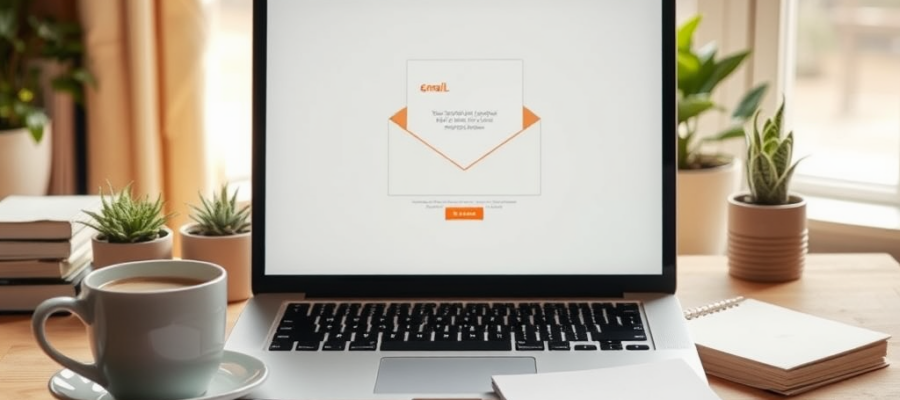In a world where digital communication often feels cluttered, an eye-catching email design can be the difference between capturing your audience’s attention or being lost in their inbox. As businesses and brands continuously strive to make authentic connections with their customers, the aesthetics of email marketing have never been more critical. The way an email looks can define its success, and it can be the deciding factor in whether a recipient engages with your content or moves on. This article explores proven strategies and expert tips to create visually appealing emails that not only attract the eye but also drive engagement and action.
From understanding the foundational principles of email design to incorporating effective elements like color, typography, and layout, we will cover it all. Readers can expect actionable insights that fuse creativity and strategy seamlessly. You’ll learn how to merge compelling visuals with persuasive messaging to create an unforgettable experience. Let’s delve into the art and science behind crafting beautifully designed emails!
Understanding the Basics of Email Design

Designing an email is not merely about aesthetics; it’s about creating first impressions that resonate. Research shows that recipients often form an opinion about an email within milliseconds. Therefore, it’s imperative to get those initial design elements right. Key components of email design include layout structure, visual hierarchy, color schemes, typography, and images. An effective email design must incorporate these elements to foster better engagement.
In summary, email design encompasses various aspects:
- Layout structure and organization
- Color choices that reflect your brand
- Typography that enhances readability
- Visual elements like images and graphics
Choosing the Right Color Scheme

The psychological impact of colors can profoundly affect how your email is perceived. Different colors evoke different emotions, which can significantly influence the reader’s decision. For instance, blue often instills a sense of trust, while red can create a sense of urgency. Thus, selecting colors that align with your brand identity while being mindful of the emotional triggers they may evoke is crucial.
Here are some tips for selecting a color scheme:
- Analyze your brand’s existing color palette.
- Consider contrasting colors for text and backgrounds to enhance readability.
- Utilize color psychology while being consistent with branding.
Maintaining high contrast between text and background is essential. A poorly contrasting design not only hampers readability but can also frustrate the reader, leading to disengagement. Ensure that your primary text color stands out against the background color for the best results.
Typography Matters
The fonts you choose play a significant role in email aesthetics. Different fonts can convey various moods and personality traits. Sans-serif fonts often feel modern and sleek, while serif fonts can impart sophistication and tradition. It’s essential to choose fonts that resonate with your brand’s voice.
| Font Style | Best For |
|---|---|
| Arial | Modern, clean communication. |
| Georgia | Traditional, formal settings. |
| Verdana | Enhanced readability on screens. |
To avoid common typography mistakes, stick to 2-3 fonts at most. Using too many fonts can make your email appear cluttered and unprofessional. Also, pay attention to font size; typically, a minimum of 14px is recommended for body text. Ensuring compliance with accessibility standards should also be a priority, as this makes your content available to a broader audience.
Visual Elements: Images and Graphics
Incorporating images can enrich the visual experience of your email, making it more engaging. Images help break up text, providing visual relief to readers, which can improve comprehension. However, it’s essential to optimize images for faster loading times without sacrificing quality. Heavy images can lead to slow loading speeds, which can be detrimental to engagement.
When selecting images, consider the following:
- Opt for high-quality visuals that relate to your content.
- Optimize images for size and loading speed.
- Use alt text for accessibility and to improve SEO.
Creating a Clear Layout
A well-structured layout can guide the reader’s journey through your email. With an effective layout, you can provide logical flow and emphasize essential elements. Group related content and utilize headings to break information into digestible sections. This approach not only fosters readability but also encourages action.
Whitespace isn’t just empty space; it’s a powerful design tool that enhances the overall aesthetic. Adequate spacing around text, images, and other elements can lead to improved focus and comprehension. By minimizing visual clutter, you allow your core message to shine.
Crafting Compelling Call-to-Action (CTA) Buttons
The Call-to-Action (CTA) is arguably the most crucial element of any email. It serves as the bridge between content and action. A well-designed and strategically placed CTA can drive receiver engagement. Ensure your CTA stands out through thoughtful design choices such as size, color, and placement.
When crafting CTAs, consider the following guidelines:
- Use actionable language that incites urgency.
- Choose colors that complement but contrast from the background.
- Position CTAs where readers expect to find them.
Testing and Optimizing Your Email Designs
Regular testing is essential for understanding the effectiveness of your email designs. A/B testing allows you to compare different designs to see what resonates more with your audience. Track various metrics such as open rates, click-through rates, and engagement duration. By analyzing this data, you can continually optimize your emails for better performance.
Leveraging the right tools can make a significant difference in your testing phase. Many platforms provide A/B testing features, responsive design testing, and analytics to track performance. Some popular tools to consider include:
- Mailchimp
- Optimizely
- Litmus
Итог
Incorporating visually appealing designs into your emails can dramatically enhance engagement rates. By understanding core components like color schemes, typography, and layouts, marketers can create emails that not only attract attention but also drive action. Remember to keep your audience in mind at every design stage, ensuring you not only communicate visually but also meaningfully. Implementing these strategies will set your email campaigns on the path to remarkable success.
Часто задаваемые вопросы
- What is the ideal image size for emails? The ideal image size varies, but aim for dimensions that ensure optimal loading speed, typically around 600-800 pixels wide.
- How many fonts should I use in an email? It’s best to stick to two or three fonts to maintain a consistent and professional look.
- What are the top colors for boosting email engagement? Colors like blue, green, and orange are often associated with trust and action, making them effective choices.
- How frequently should I send visually appealing emails? It depends on your audience, but aim for a consistent schedule, like weekly or monthly, to keep your audience engaged without overwhelming them.
- What tools can I use for designing emails? Popular tools include Mailchimp, Canva, and Litmus, which offer a range of templates and design features.
